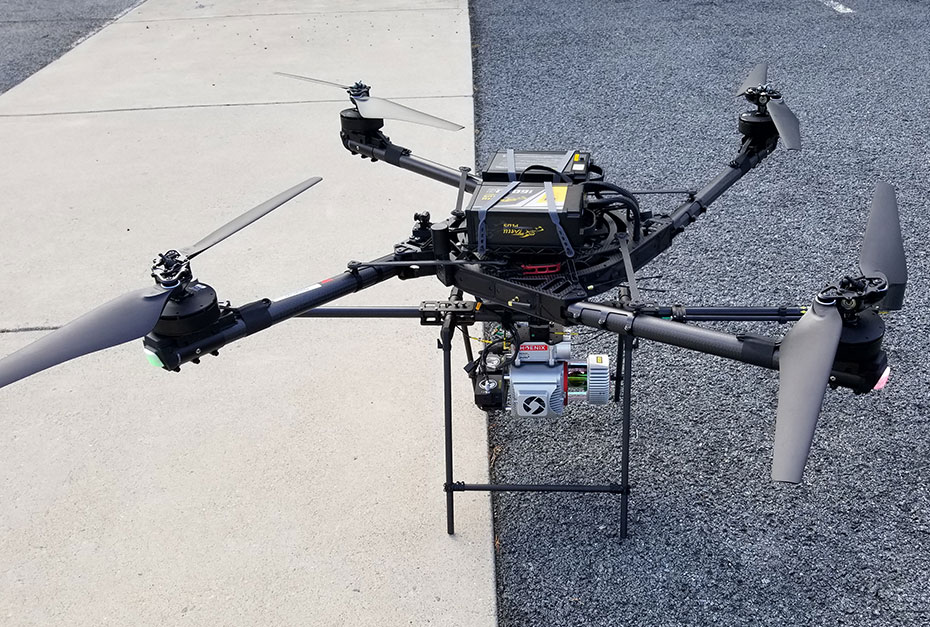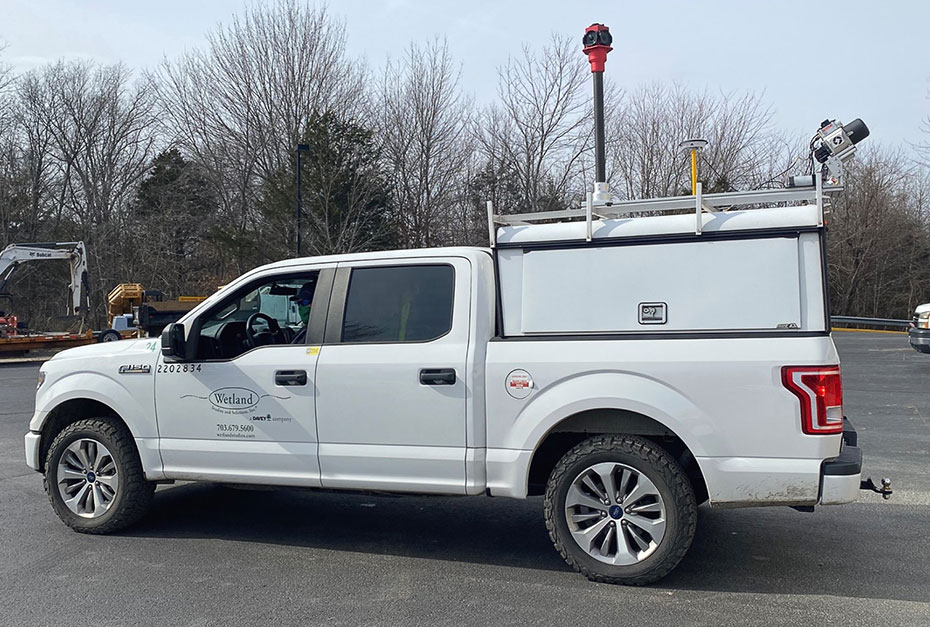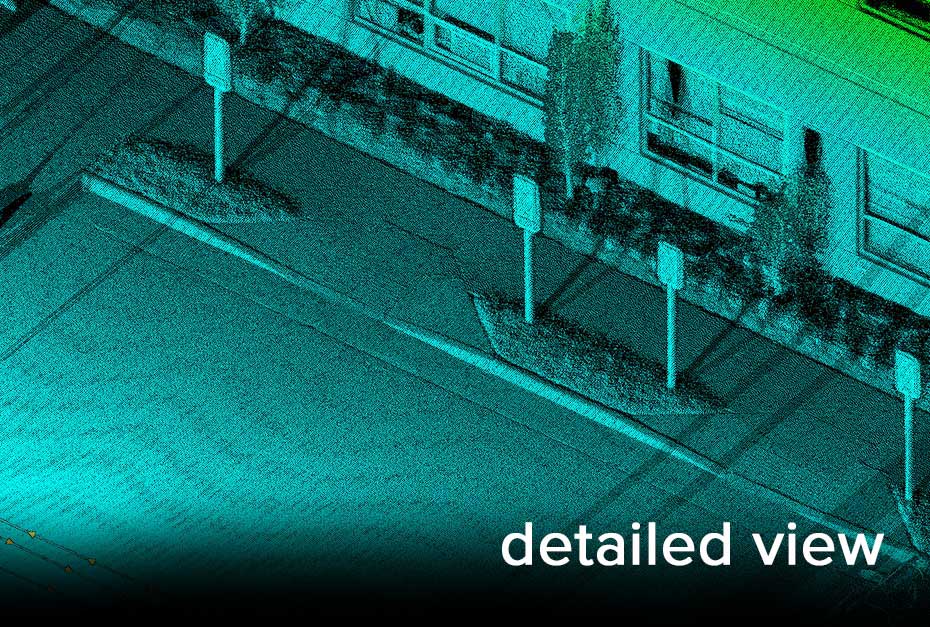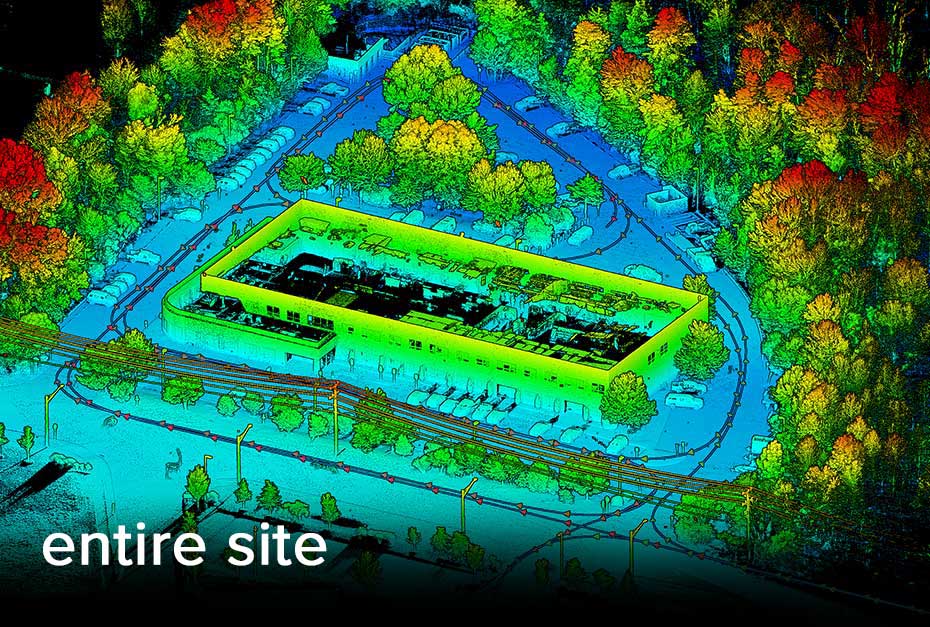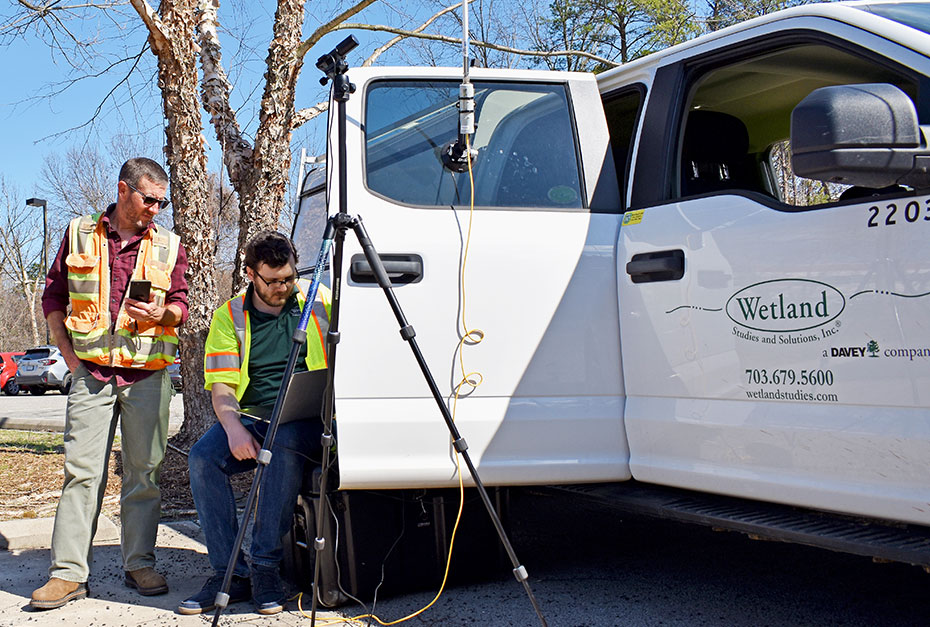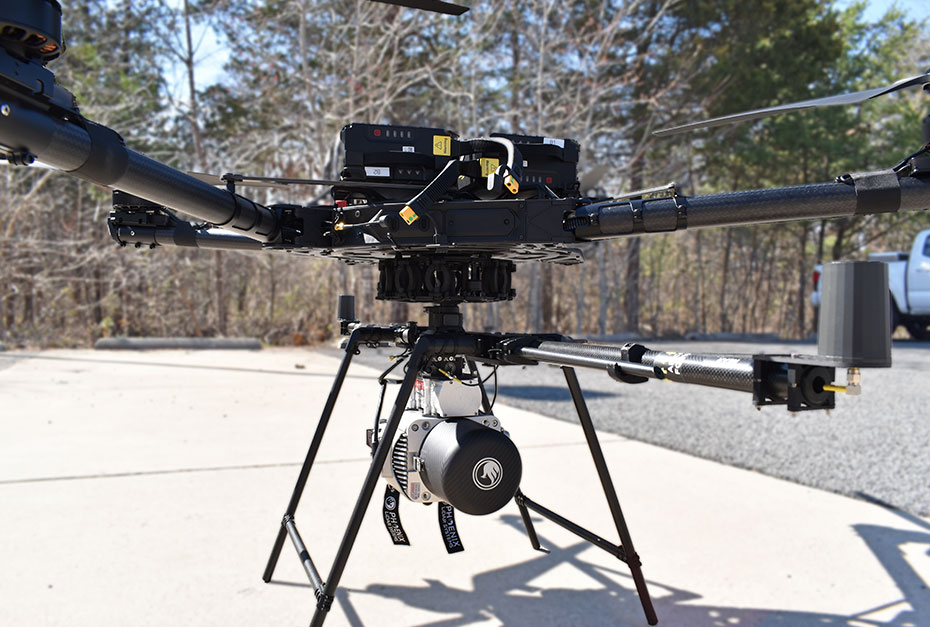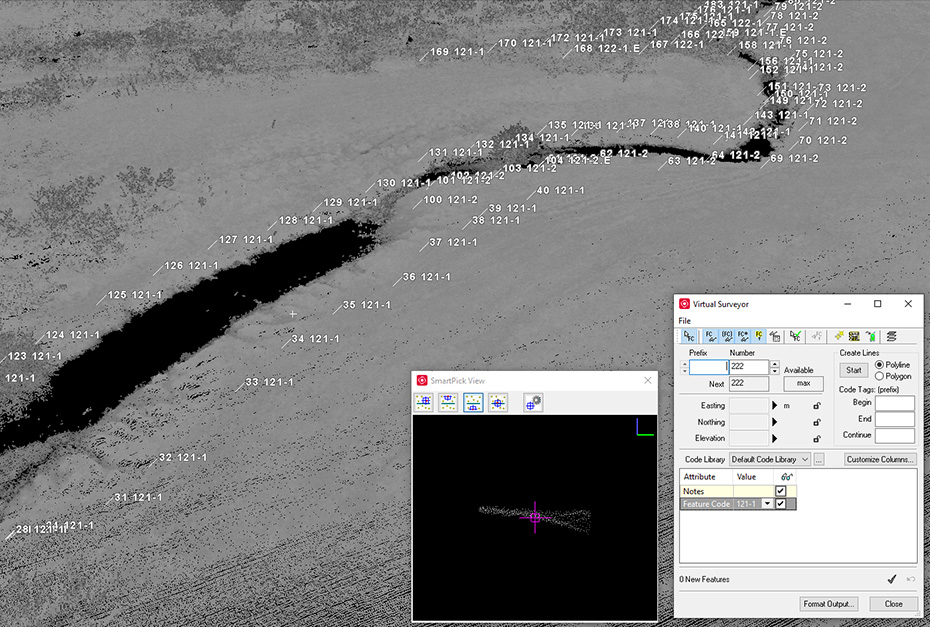LiDAR, an acronym for Light Detection and Ranging, is an advanced technology used to develop highly accurate, three-dimensional data sets. Wetland Studies and Solutions, Inc. (WSSI) has been using LiDAR data to help our clients acquire survey-grade data for their projects for several years, and we have recently invested in a cutting-edge LiDAR system that can be configured for aerial or mobile collection so we can access difficult locations and efficiently cover expansive project sites. With our data collection and processing entirely in-house, WSSI continues to provide our clients new ways to see their projects and gather intel for informed decision making. The level of detail is astounding: equivalent to being able to see a U.S. quarter on the ground anywhere on the site.
What Does LiDAR Look Like?
Starting out, LiDAR can look like using a drone or it can look like driving a truck along the subject property to collect 1.5 million data points per second.

